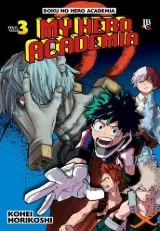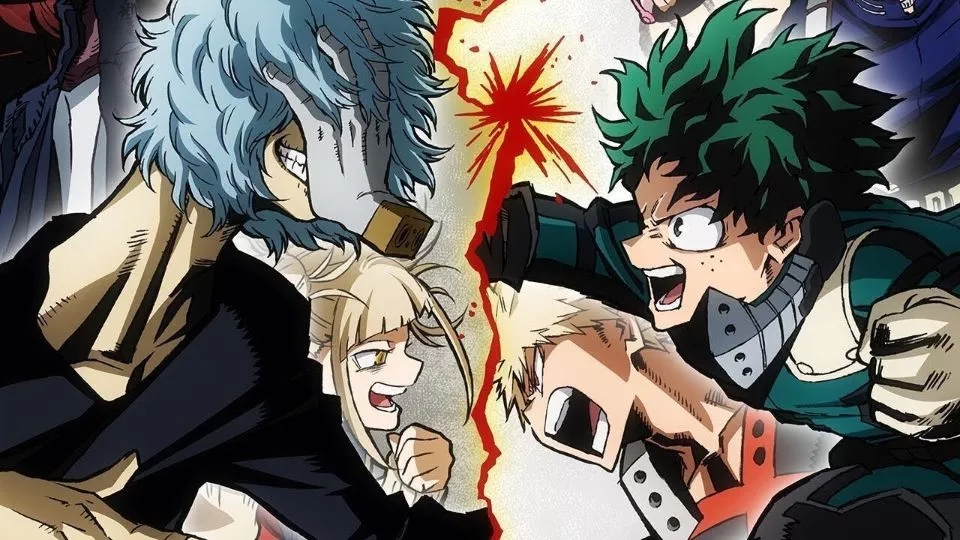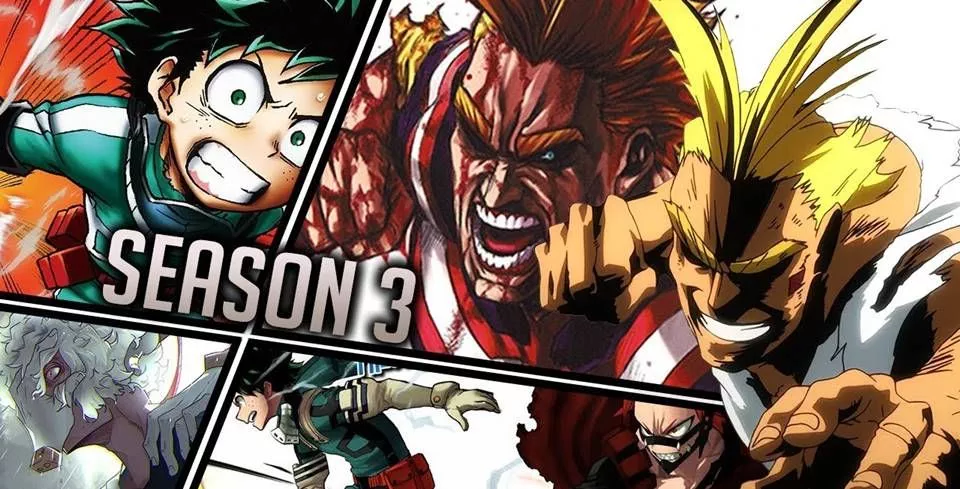Boku no Hero Academia Seaso...
Introduction The second season of Boku no He...
By Kathy Graves2293

0

Introduction
Although I’d originally watched the third season of Boku no Hero Academia only a couple of months ago, I remember to begin vaguely disappointed when I compared it to the second season, so I decided to re-watch the season before I reviewed it, and I was pleasantly surprised to find that my opinions regarding the season had changed positively.
While I’m going to discuss some issues that the season had that the previous ones didn’t, I was generally quite satisfied with the season as an installment in the Boku no Hero Academia franchise. This season came out in 2018 and was produced by studio Bones, just like the other seasons, and achieved a rating of 8.51 out of 10 on MyAnimeList.
The third season is actually down by about half a percent in comparison to the second season’s rating, although it’s still up by some two percent in comparison to the first season.
Story and Plot
Just like the previous season, this season can be easily divided into a set of three different story arcs; they are the Training Camp arc, the Counter-Attack on the League of Villains arc, and the Provisional Licensing Exam arc, although I do want to draw attention to the few scattered episodes between the arcs because some of them often had just as strong of an effect as the main arcs.
This season is definitely rich in content and there’s a lot that I can say about the season as a whole, but I’m going to limit myself to discussing a few comments per arc and the feeling I got from the season as a whole.
The first arc definitely felt a bit weak to me in comparison to the others. The training camp, while interesting and fun, seemed like a bit of a waste of time until we got to the action with the League of Villains’ attack on the camp.
I was happy to see some more attention being given to the Class B students in the fight against the villains, and overall I felt like the arc as a whole was well thought out with each of the individual fight scenes and struggles to be well-paced and having relevance to the plot as well as realism with respect to how and why they could have happened.
Unfortunately, I found that I was disappointed with Midoriya’s fight against Muscular. I understand its relevance to the plot and Midoriya’s evolution as a fighter and his transformation to relying on his legs instead of his arms, but the execution in this fight definitely wasn’t on par with his performance in other fights.
The ending was quite well done, with Midoriya deciding to give it his all to save Kota, but the sad truth is that the majority of the fight is Midoriya and Muscular exchanging blows with each one yelling about how they were increasing their power as much as possible.
It was kind of embarrassing, although I was pleased with how it was ended. The rest of the villain attack went off smoothly and Bakugo’s capture was done pretty well and in a way that definitely made the plot move forward.
Unfortunately, most of this season suffered the same flashback problem that the second season had trouble with. Again, the issue was mainly present in the first few episodes, roughly until the end of the Training Camp arc, although every episode from then on lacked a cold open and had a Fullmetal Alchemist style opening sequence with Midoriya mentioning the premise of the show before hitting us with the opening theme each time.
I honestly felt like this season was struggling with pacing issues, as though it was looking for scenes to fill its runtime with at some point, especially near the end, what with introducing characters like Overhaul and Mirio early. When I first started watching Season 4 I’d completely forgotten that they’d been introduced in Season 3, and while I was watching the third season I always ended up skipping the introduction.
Flashbacks are definitely a key tool in filmmaking and do serve an important purpose when it comes to reminding the audience of distant memories or old events that affected characters strongly, but excessively using them only serves to draw out action scenes that need to be resolved quickly before the excitement wears off. This season followed that formula a little in the beginning, although the problem definitely wore off a little later on.
The second arc, although definitely the shortest, was also my favorite of the entire season. Watching the greatest figures of the pro hero world come together to fight the forces of evil was one of the most satisfying things I’d seen in the entire season, although nothing came close to the final fight between All for One and All Might.
The fight scene was absolutely excellent, although it came perilously close to being another slug fest like Midoriya’s with Muscular. While I can’t deny the expertise invested in its creation, the perfect execution of the sound, voice acting, and animation, what I will criticize is All for One.
While his introduction was made a long time ago and his power was relatively clarified, the main issue with having a fight scene of this kind of finality between All Might and All for One this early in the series is that the audience doesn’t have a good enough grasp of the evil or strength of All for One for it to have a profound effect on us. Sure, he wrecked Kamino ward and we’d heard from All Might about just how dangerous he’d been in the past, but the ambiguity in his background and the time frames involved only made it confusing how dangerous he was.
One thing that Boku no Hero Academia definitely gets right every time is the accuracy of its world building. The retirement of All Might was an excellent move, especially after last season’s reveal of Stain and his ideology, because it set the stage for future battles and the strengthening of evil that has to be fought.
It was only my re-watch when I really started to pay attention to the universe around the heroes that I realized just how important All Might be to maintaining the balance of power, and just how many criminals there were even with him present. It’s a small leap from there to imagine just how much-organized crime would begin to reorganize itself after his departure, especially with the vacuum that an unpopular hero like Endeavor would never be able to fill.
 https://revyou.com/uploads/thumbnail-960/1593376375374maxresdefault-3.webp
My Hero Academia: Boku no Hero Academia - Vol.3 - TV Series Review
https://revyou.com/uploads/thumbnail-960/1593376375374maxresdefault-3.webp
My Hero Academia: Boku no Hero Academia - Vol.3 - TV Series Review
Anyway, this leads us to the Provisional Licensing Exam arc, which I wasn’t a huge fan of, to be honest. I was pleased with the introduction of the other hero schools, however. Up until then, Boku no Hero Academia had been generating a fairly narrow path for kids grow to become heroes; displaying the presence of other schools with strong heroes shows us just how much of a struggle it will be for an outcast to become great and take their place among the heroes of the future.
I was also quite happy with Himiko Toga’s infiltration of the exam; it definitely helped ensure the presence of a traitor in the student population dispersing information about UA, as well as showing that, despite their retreat, Shigaraki was still keeping the League of Villains active, collecting information and planning for the future.
The actual ins and outs of the fights and the testing were pretty standard, although it was definitely fun seeing Midoriya use his new Shoot Style. Seeing Inasa rebel against Todoroki, while realistic, felt like a bit of a useless time-sink, and I was quite disappointed with the screen time Todoroki had in general.
As such an excellent character, I would have been happy to see him more involved, but that wouldn’t really fit with his character, so it is what it is. In general, though, seeing the other schools and the cooperation that went on between the different heroes throughout the rescue portion of the exam was much more satisfying.
However, despite all of that, the best part of the show by far was the fight scene between Bakugou and Midoriya. An illegal, moonlit battle between two bitter rivals over the fate of their idol and the emotional struggle involved as Bakugou begins to get over his vast array of complexes.
The entire affair is a representation of character growth and the maelstrom of emotions flowing through each character, and that’s beside the highly technical side of the fight, with multiple different fighting styles, feints, thoughts, and plans all being developed and executed in the blink of an eye. The entire fight scene is a work of art.
In regards to the ending of the season, I do want to add that it definitely adds suspense and starts building hype for Season 4. A character like Mirio is definitely the kind of character that would be interesting to watch and get to know, and I can see Midoriya easily looking up to him.
That’s besides of course, his amazing power, and that’s besides all the nefarious plots and scheme’s Shigaraki is forming with Overhaul and his band of plague doctors.
Characters
The characters in the third season hold up quite well. We get introduced to a lot of new characters, with several new ones from Shiketsu High during the exam arc, and a couple of new villains. The show does a good job of introducing us to the new characters and highlighting their individual fights and struggles as well as those of the main characters.
The quirks all remain solid and unique (special commendation goes to the Narrow Eyes character, whose quirk “Meatball” is absolutely disgusting and horrific) and the show definitely deserves recognition for the attention they gave to characters like Twice in the little vignette he was given during one of the later episodes.
As I watch more and more of Boku no Hero Academia I learn more and more about how it’s more than just about Midoriya (although he will definitely remain one of my favorite characters); it’s about the struggle to fight evil and the need for unity in the face of great evil. All of the characters are growing and learning to work together to achieve their goals.
Music (and Art and Animation)
Look, both the art and animation were as good as always. Studio Bones does a fantastic job bringing the manga’s solid, vibrant visual style to life in the anime, although the rocky backgrounds of the Provisional Licensing Exam really got boring after a while.
The real issue in this season’s style was in the music. I absolutely love Boku no Hero Academia’s music, and some of the greatest scenes, like Mirio’s speech, All Might’s fight with All for One, and Midoriya and Bakugou’s fight all had spectacular audio and background tracks, but I can’t say the same for the rest of the season.
The new tracks this season were really good, but most of the music in the majority of the season was recycled from the second season. On its own, that wouldn’t be a bad thing, but the issue is when it starts to get in the way of the action or dramatic scenes. Oftentimes, music that just doesn’t fit will start playing.
Emotional moments might get undercut by comic music, or a few seconds of a powerful fight theme will play before the fight actually gets started. It really makes me appreciate just how tightly fit the music in the early seasons was, and I do hope they get that issue sorted in the fourth season (I definitely saw some progress by the end of the season).
As for the new music, Yuki Hayashi has done a fantastic job, as usual with the OST. The soundtrack’s themes sound much more tech-influenced this time, with heavier hip-hop style beats, but when paired correctly with their respective scenes the music does an excellent job.
I would also like to mention the opening and ending themes. Boku no Hero Academia has some spectacular themes, opening and ending, but I was definitely disappointed by the last few in this season. Although the first opening, “Odd Future” was similar to the other openings, “Make My Story” definitely didn’t follow through on the theme of powerful, hype openings traditional to both Boku no Hero Academia and shounen anime in general.
Both endings were alright, to be honest; neither one really stands out, although I personally enjoyed “Long Hope Phillia” better than “Update”, but that was really down to personal preference in the end, and the fact that “Long Hope Phillia” actually had an accompanying video with some semblance of a story.
Conclusion
The third season of Boku no Hero Academia is yet another example of high quality television. Despite everything I’ve said before, I still enjoyed the show very much and found that the music issue was my greatest issue overall. Some of the story elements were boring, but that’s to be expected of any series.
Again, while not a ten out of ten by any means, Boku no Hero Academia remains a high standard of anime in terms of plot, character, and design and I hope that other shounen anime, as well as later seasons of the series, maintain a standard this high.
Updated 3 years ago